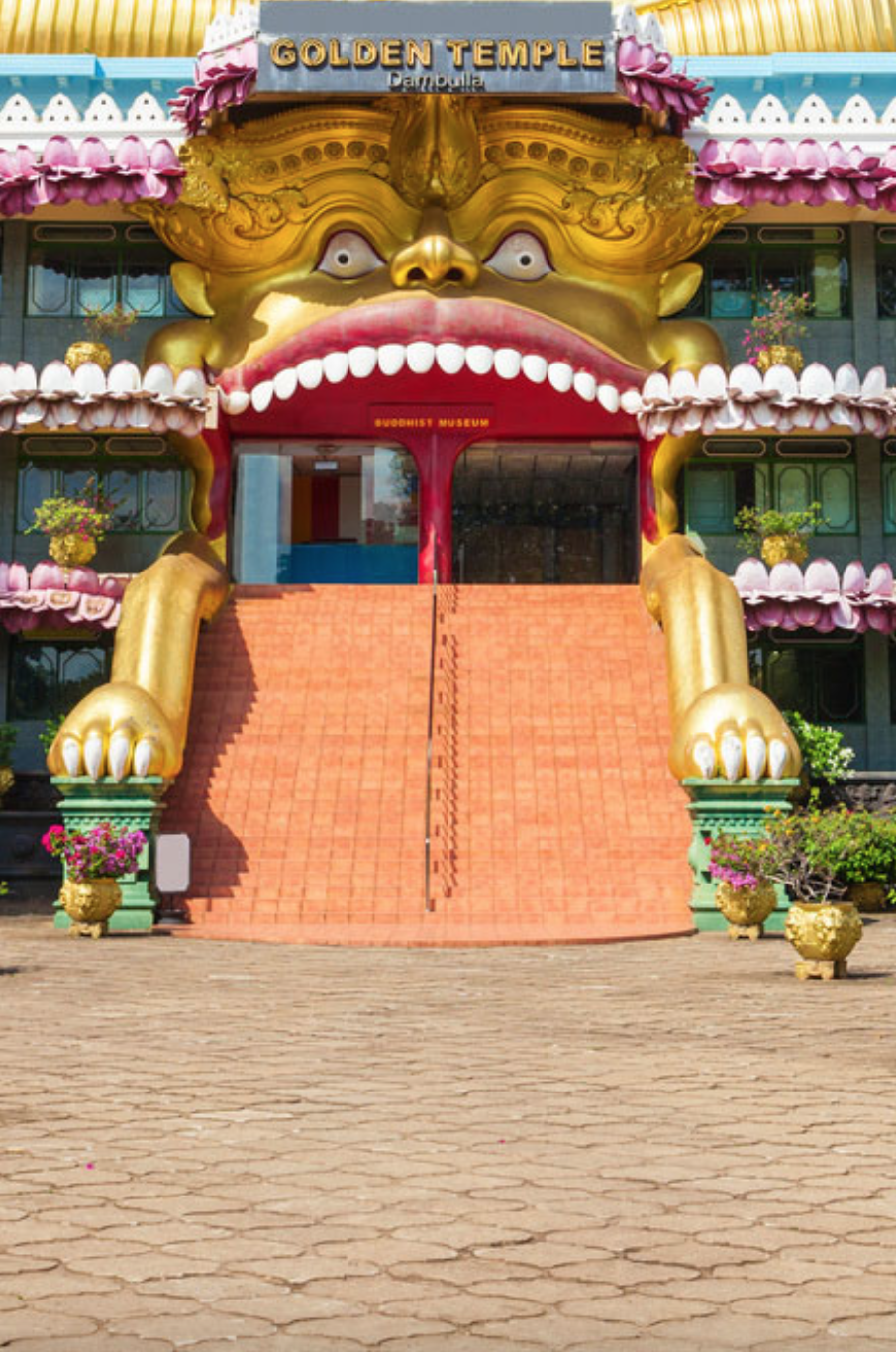
Sri Lanka: Country and People
numbers & facts
- Sri Lanka (from Sanskrit, meaning "honourable island") was formerly called Ceylon.
- 65,525 km² in size
- North-South: 435 km; East-West: 225 km
- Capital: Sri Jayawardenapura Kotte (near Colombo)
- Population: approx. 20 million
- Languages: Sinhala and Tamil
- Currency: Sri Lankan Rupee (LKR)

Food, groceries and fruits
- The traditional meal: Rice & curryFavourite side dishes: Dahl, potato curry, kankun, beans, fish or chicken and of course: papadam!
- Snacks: Rottis! In all shapes and sizes with all kind of fillings
- On special occasions and public holidays, there is "kiribath" (rice pudding) with "sambol" as a spicy side dish
- You eat with your fingers, cutlery is a rarity
- Coconuts: The refreshing juice is the best thirst quencher. Coconut flour and coconut milk are used in almost all dishes
- Coconut fibres are also used to make mats, ropes, brushes and much more
- The coconut oil is useful in many ways: be it in cooking or for damaged hair, the coconut gives us even more: e.g. toddy, a flower schnapps

History
- In the 16th century, the country was colonised first by the Portuguese and then by the Dutch.
- In 1815, the country became part of the British Empire.
- In 1948, the country peacefully broke away from Great Britain and gained independence.
- The country has only been called "Sri Lanka" since 1972, before that the name was "Ceylon".
- The civil war between Tamil separatists and the Sinhalese military lasted 26 years (1983 - 2009). In 2009, the president officially declared the end of the war.

Population and religion: Buddhists, Tamils and Muslims
- The largest population group is the Sinhalese, who make up 75% of the population.
- They speak the Indo-Aryan language "Sinhala" (Sinhala) and are predominantly followers of Theravada Buddhism
- The proportion of Tamils is 17 % (divided into Sri Lankan 12 % and Indian 5 %)
- They speak the Dravidian language "Tamil" and are predominantly followers of Hinduism
- 8 % of the population are Muslim Moors.

Economy, exports, imports
Most important export products:
- Tea
- Jewellery
- Clothing
- Cinnamon
- Pepper
Main import:
- Petrol
- cars
- Household appliances
- Technical appliances

Ayurveda: the science of long life
Ayurveda is the science of healthy longevity (ayur = healthy, long life; weda = knowledge).
- Ancient healing method with a holistic view of the human being.
- It originated over 2000 years ago in the Indian cultural area and still plays an important role in Sri Lanka's health system today.
- Considered one of the first systematic healing methods in the world.
- At the centre of this healing method is the individual person.
- The aim of Ayurveda treatment is to harmonise the flow of bioenergy so that the person can once again be "in themselves".
- The treatments are based on herbs, plants and oils.
- The basic idea: the body is regulated by 3 factors (doshas): Vata (air), Pitta (fire) and Kapha (earth), which correspond to the nervous, digestive and immune systems.
- If doshas are out of balance, you become ill.

Cultural monuments and sacred places:
According to Unesco, 8 cities in Sri Lanka are on the "World Heritage List".
- Anuradhapura: numerous Buddhist monuments are reminders of the political and religious past. For more than 1,300 years, the city was regarded as the centre and important metropolis for this.
- Polonaruwa: the second capital with impressive temple ruins.
- Sigiriya: the ascent to the rock fortress is rewarded with a breathtaking view.
- Dambulla: an impressive rock temple is located here.
- Galle: the Dutch fort of Galle was inscribed on the World Heritage List in 1988.
- Kandy: the City of the Sacred Tooth was inscribed in the same year.
- Sinharaja Forest Reserve: the last remnants of the primary rainforest can be found here, as well as an enormous amount of indigenous flora and fauna.
- Hortons Plains, Knuckels Range, Peak Wilderness Sanctuary: due to their unique nature, these areas were jointly declared as part of the Central Highlands worthy of protection.

Landscapes and regions
- West coast: the railway line running parallel to the sea makes it easy to reach individual destinations for swimming and relaxing.
- Here you will find romantic fishing, culture, Ayurveda and partying.
- The deep south: this stretch of coast is known for its paradisiacal palm beaches and fishing romance.
- There is a wide variety of activities on offer, ranging from lagoon boat tours, surfing, whale watching and safaris to exciting sanctuaries and ceremonies.
- The highlands: Mountain scenery, green tea fields and cooler air attract hiking enthusiasts.
- The highlands also offer rustic accommodation and probably the most beautiful railway line in Sri Lanka.

Movement, transport, logistics
Public transports
- Train
- Bus
- TukTuk (Taxi)
Privat:
- Often scooters, motorbikes or tuk tuks
- Cars are very rare in the villages, but more common in larger towns.
- There is a motorway from Colombo to Matara (approx. 140 km), which is mainly used by lorries for transporting goods. Further motorways are planned for the future. More traffic lights are also to be installed on the main transport routes, as well as public car parks to make city traffic more efficient. Goods trains will also be used for transport.
- There are over 3500 road deaths every year, many due to accidents involving buses.

